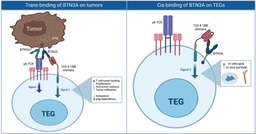Spatio-temporal rainfall variability and trends using a Kriging-interpolation and Innovative trend analysis approach: the case of Wolaita zone, south Ethiopia
Published in Earth & Environment and Ecology & Evolution
The Journey Behind the Study
The Wolaita Zone in Southern Ethiopia, with its diverse agro-ecological zones (AEZs), is emblematic of how climate variability affects rain-fed agriculture and livelihoods. As part of our exploration, we aimed to fill gaps in understanding spatio-temporal rainfall patterns that are vital for planning agriculture, water resource management, and climate adaptation.
The study employed geostatistical methods like ordinary kriging (OK) and advanced techniques such as the Innovative Trend Analysis (ITA). These tools allowed us to delve deeper into rainfall anomalies, highlighting areas prone to extreme variability.
Key Findings
- Rainfall Distribution: The highland areas of Wolaita received significantly more rainfall compared to the lowlands. The Belg and Kiremt seasons contributed the bulk of annual precipitation, with substantial variability observed across different AEZs.
- Rainfall Trends: Analysis revealed a declining trend in annual and Kiremt rainfall, posing challenges for agricultural sustainability. Interestingly, the Bega season showed a slight upward trend, hinting at shifts in seasonal patterns.
- Climatic Impacts: Regions with higher variability in rainfall experienced greater challenges in agriculture and water management. The standardized anomaly index underscored years of extreme dry and wet conditions, crucial for stakeholders in climate adaptation planning.
Challenges and Methodological Innovations
Collecting consistent data spanning over three decades was a significant hurdle. Many weather stations in the region faced data gaps or inconsistencies, which we addressed using advanced imputation techniques. Furthermore, integrating ITA and traditional methods like the Mann-Kendall (MK) test enabled us to uncover hidden trends often overlooked by conventional analyses.
Implications for Sustainability
Our findings emphasize the importance of localized climate studies in informing broader sustainability goals. Policymakers and stakeholders can use insights from our work to prioritize interventions, such as developing drought-resistant crop varieties and enhancing water management systems tailored to specific AEZs.
Personal Reflections
Conducting this research underscored the intricate connections between climate science, agriculture, and societal well-being. The dedication of my team and the support from local meteorological agencies were instrumental in overcoming challenges, and we hope this study contributes to more resilient agricultural practices in Ethiopia.
Conclusion
This research is not just about numbers and graphs; it's a call to action for climate resilience. We invite the scientific community, policymakers, and local stakeholders to build upon our findings and take proactive measures to adapt to changing rainfall patterns.
To read the full study, access it here.
Follow the Topic
-
Discover Sustainability

A multi-disciplinary, open access, community-focussed journal publishing results from across all fields relevant to sustainability research whilst supporting policy developments that address all 17 of the United Nations Sustainable Development Goals (SDGs).
Related Collections
With Collections, you can get published faster and increase your visibility.
Advancing Sustainable Development: The Role of Circular Economy Practices, Green Innovation and Corporate Responsibility
Achieving sustainable development, as envisioned in the United Nations’ 2030 Agenda, requires transformative solutions to reconcile economic growth with environmental and social imperatives. Circular economy practices, green innovations, and corporate responsibility stand out as critical drivers in this effort—reducing resource depletion, fostering innovation, and embedding accountability into global systems. Yet, their combined potential to accelerate progress toward the Sustainable Development Goals (SDGs) remains underexplored. This Collection aims to unravel these synergies, offering actionable insights for researchers, policymakers, and practitioners committed to a sustainable future.
Keywords: Sustainable Development, Circular Economy Practices, Green Innovation, Corporate Responsibility, Challenges and Opportunities in Sustainable Development.
This Collection supports and amplifies research related to SDG 7, SDG 12, SDG 13 and SDG 17.
Publishing Model: Open Access
Deadline: Apr 01, 2026
Transforming Education for Innovation, Sustainability, and Social Responsibility
Education plays a key role in addressing today’s global challenges, including climate change, social inequalities, and technological changes. As the world becomes more complex, education must transform to prepare students for the future. This Collection will explore how education can support innovation, sustainability, and social responsibility. By focusing on new teaching methods, policies, and institutional changes, this issue aims to contribute to meaningful educational reforms. Research in this area will help create a learning environment that fosters problem-solving, critical thinking, and ethical decision-making among students.
Technological advancements such as artificial intelligence, automation, and digital transformation are changing how people work and learn. To keep up with these changes, education must teach the skills needed for the future (SDG 9). Climate change is another major challenge that requires education systems to focus on sustainability and environmental awareness (SDG 13). Social and economic inequalities make it difficult for many people to access quality education and opportunities for success (SDG 10). Education must become more inclusive and fairer, ensuring equal opportunities for all (SDG 4). Additionally, global challenges like migration, cultural diversity, and human rights require an education system that promotes ethical responsibility and global citizenship (SDG 16). Many education systems are outdated, face funding issues, and struggle to adapt to modern needs, highlighting the need for research that guides policy improvements (SDG 4).
This Collection supports several United Nations Sustainable Development Goals (SDGs), including SDG 4 (Quality Education), SDG 9 (Industry, Innovation, and Infrastructure), SDG 10 (Reduced Inequalities), SDG 13 (Climate Action), and SDG 16 (Peace, Justice, and Strong Institutions). Education for sustainability fosters environmental awareness and responsible actions (SDG 13). Innovation in education drives technological and economic growth (SDG 9). Ensuring access to quality education promotes social equity (SDG 10). Encouraging social responsibility in education helps create a more just and ethical society (SDG 16).
We invite researchers to submit original papers for this Collection, welcoming various research approaches, including conceptual, empirical, and analytical studies. The scope of this Collection includes topics related to education, sustainability, and social responsibility. Suggested areas of interest include but are not limited to the following:
• Innovative Teaching Methods for the 21st Century
• Technology and Digital Transformation in Education
• Policy and Governance for Educational Reform
• Climate Change and Sustainability Education
• Equity and Inclusion in Education
• Ethics and Social Responsibility in Education
• Global Citizenship and Cross-Cultural Education
• Education for Employability and Skill Development
• Artificial Intelligence and Education
• Green Campuses and Sustainable Learning Environments
• Training for Sustainability and Innovation
• Community Engagement and Public Awareness through Education
• Promoting Green HRM, Marketing, Leadership, & Entrepreneurship in Education
The target audience for this Collection includes researchers, policymakers, educators, and professionals involved in educational reform, sustainability, social sciences, and technology. Contributions from different regions and contexts are encouraged to provide a global perspective on these issues. By fostering research on innovation, sustainability, and social responsibility in education, this Collection aims to contribute to global efforts in transforming education. We look forward to high-quality submissions that help shape the future of education.
This Collection supports and amplifies research related to SDG
Keywords: Educational Innovation; Sustainability Education; Social Responsibility; Digital Transformation; Global Citizenship; Policy Reform in Education; Inclusive Education; AI in Education; Climate Action; SDGs and Education
Publishing Model: Open Access
Deadline: Jan 31, 2026





Please sign in or register for FREE
If you are a registered user on Research Communities by Springer Nature, please sign in